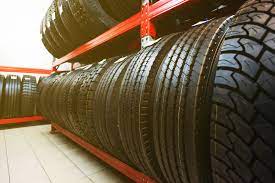When choosing tires, you need to consider their basic parameters and operating conditions. Tires are divided into types, depending on what they intend to drive on – mud, snow, ice, asphalt. In addition, they can be designed for relaxed city driving or extreme stress on the racetrack.
According to seasonality, tires are divided into three types: summer, winter and all-season. Summer tire is recommended to operate at an air temperature not lower than + 7 ° C. Winter ones are optimal for cold weather, and all-season ones are designed for use all year round.
Selecting tires by size
The car manufacturer indicates in the documentation which tires are suitable for the vehicle. The larger the diameter of the tire and the lower its profile, the more expensive it is. When comparing tires from the same manufacturer with a radius of 15 and 17 inches, their prices differ significantly.
In winter, experts recommend using narrow tires with a high profile and small diameter. The reason is that because such tires better absorb shock when driving on bumps, they are economical, safe and provide a smooth ride.
People from harsh winters such as Eastern Europe should change their cars into wide, low-profile, larger diameter tires for the summer. The lower the profile and the larger the diameter, the more precise the control. The adhesion to the road surface is directly proportional to the width of the slope.
What other characteristics are necessary to pay attention to?
In addition to the rubber parameters generally known to motorists, tires differ in the speed index and the load they can withstand. All this information is indicated in the product labelling. From it, you can see what maximum speed and weight limit a unique rubber is designed for.
When buying tires, a domestic car owner should consider the following points:
tires must be with a margin of safety, which will prevent them from bursting under critical loads.
XL rubber is not suitable for everyday use on European roads.
tires must correspond to the characteristics of the terrain in which they will be used and the class of equipment.
Since you have come this far, below, we will tell you about a profitable tire buying scheme that will benefit and help you save money.
A narrower tire with a smaller diameter with a higher profile height cost less than its big sister. Therefore, it is recommended to take just a narrower tire with a smaller or similar diameter for winter. Such a tire makes less noise, is more economical, has better cross-country ability on snow, and is cheaper. And the high profile perfectly fulfils road irregularities, withstands impact and provides the car with a smoother ride. In general, with low-speed indicators on our winter roads, the operation of tires with such parameters is most optimal.
Based on the recommendations of many racers, journalists, and motorists, we finally can draw this conclusion that we choose a tire (within the acceptable factory parameters) of a smaller diameter, smaller width, and greater height for winter. For summer, however, we opt for a tire with a larger diameter, a larger width and a lower height.
It is also worth mentioning that highly specialized tires are used only in certain situations, such as mud or sports. For everyday driving in normal conditions, they are not well suited and deserve a separate article.
Winter, summer, or all-season tires?
All car tires can be divided into three types: winter, summer and all-season. They differ from each other in the composition of the rubber and the tread pattern. In the winter version of the rubber, the tread pattern is very clear, and there are often spikes on it. In addition, a characteristic feature of winter tires is their high elasticity.
In the tread pattern of summer tires, mainly longitudinal stripes predominate, intended for water drainage, and the transverse stripes are weakly expressed. In winter, at low temperatures, the rubber of summer tires becomes stiff and does not provide a good grip on the road surface.
All-season tires combine the characteristics of both winter tires and summer tires.






